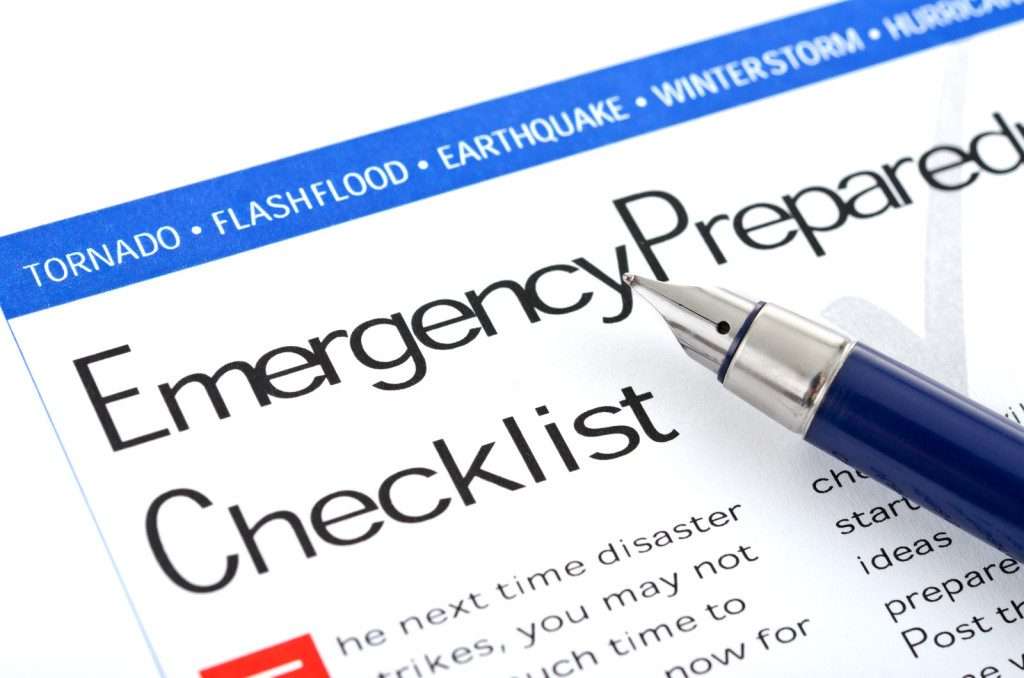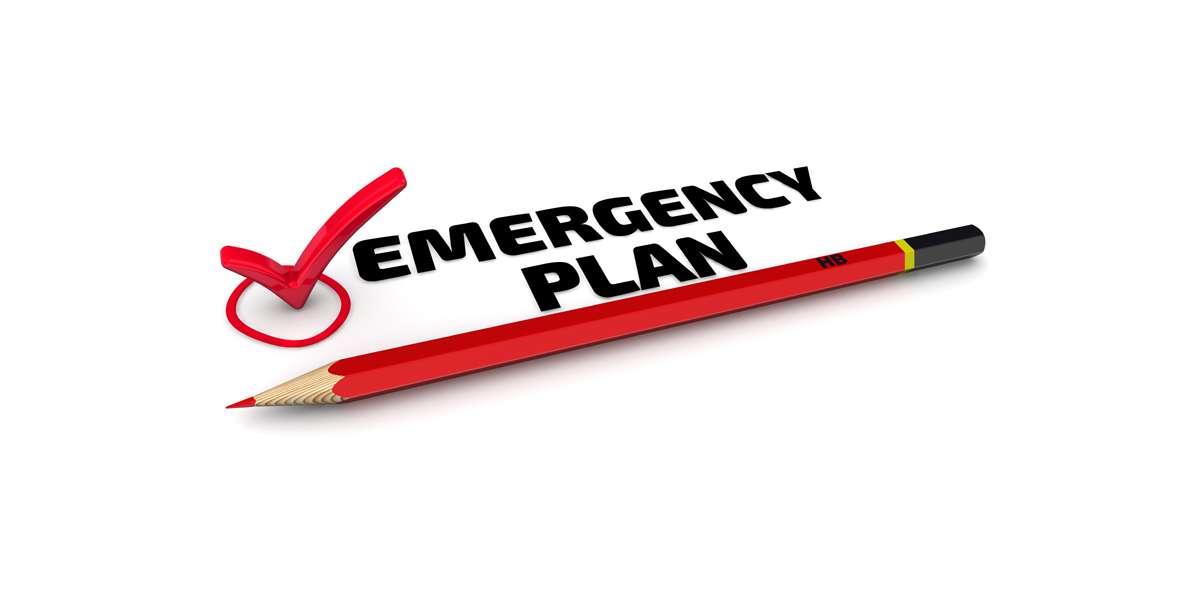Types of emergencies
An emergency is a serious, unexpected, and often dangerous situation requiring immediate action.
There are many emergency services protocols that apply in an emergency, which usually start with planning before an emergency occurs. One commonly used system for demonstrating the phases is discussed below:
The planning phase starts at emergency preparedness, where the agencies decide how to respond to a given incident or set of circumstances. This should ideally include lines of command and control, and division of activities between agencies.
Following an emergency occurring, the agencies then move to a response phase, where they execute their plans, and may end up improvising some areas of their response (due to gaps in the planning phase, which are inevitable due to the individual nature of most incidents). In the clear up from the incident, or help the people involved overcome their mental trauma.
The final phase in the circle is mitigation, which involves taking steps to ensure no re-occurrence is possible, or putting additional plans in place to ensure less damage is done. This should feedback in to the preparedness stage, with updated plans in place to deal with future emergencies, thus completing the circle.
A workplace emergency is an unforeseen situation that threatens your employees, customers, or the public; disrupts or shuts down your operations; or causes physical or environmental damage.
Emergencies may be natural or manmade and include the following:
·Floods
·Hurricanes
·Tornadoes
·Fires
·Toxic gas releases
·Chemical spills
·Radiological accidents
·Explosions
·Civil disturbances
·Workplace violence resulting in bodily harm and trauma.
Your employer will have plans to deal with all possible emergencies that can occur at your workplace. These plans will have been discussed with you during your induction training and it will also be posted on notice boards. These plans rely on the employees to act in a certain manner during an emergency to ensure that no one else is injured or killed during these situations.
During a fire, everyone's safety depends on good preparation and efficient evacuation.
The first step is to find out what the emergency telephones numbers are for the area you are working in and to make sure that every Health and Safety Representative and Supervisors has the numbers available.
The numbers should also be given to all the department and section heads and should be displayed in prominent places all over the workplace.
Your plan must include a way to alert employees, including disabled workers, to evacuate or take other action, and how to report emergencies, as required. Among the steps you must take are the following:
Make sure alarms are distinctive and recognised by all employees as a signal to evacuate the work area or perform actions identified in your plan;
Make available an emergency communications system such as a public-address system, portable radio unit, or other means to notify employees of the emergency and to contact local law enforcement, the fire department, and others
Stipulate that alarms must be able to be heard, seen, or otherwise perceived by everyone in the workplace. You might want to consider providing an auxiliary power supply in the event that electricity is shut off.
Although it is not specifically required you also may want to consider the following:
Using tactile devices to alert employees who would not otherwise be able to recognise an audible or visual alarm
Providing an updated list of key personnel such as the plant manager or physician, in order of priority, to notify in the event of an emergency during off-duty hours.
Purpose of the emergency plan
The purpose of an Emergency Plan is to document the recovery strategies, essential resources, and procedures necessary to implement a recovery process. It is often referred to as a “disaster plan”. An emergency is any unplanned event that can shut down your business, disrupt operations, cause physical or environmental damage, threaten your businesses’ financial standing or image, or even cause deaths or significant injuries to employees, clients or the public.
Emergencies and disasters can strike anytime and anywhere and often when you least expect it.
The events of September 11 underscore the need for having an Emergency Plan for all businesses. So, where do you begin? How do you protect your employees and your business? Few people can think clearly and logically in a crisis, so the best way is to plan in advance – brainstorm the worst-case scenarios and ask yourself what you would do if the worst happened.
This “brainstorming” process is best accomplished working with your businesses’ employees during department or group meetings. It serves the dual role of building awareness of emergency planning, as well as surfacing potential risk areas about which management may not have been aware.
Components of the emergency plan
The components of an emergency plan include:
Emergency personnel
Emergency communication
Emergency equipment
Emergency transportation
Effective Planning
Effective planning will:
Safeguard your investment and critical resources (human resources/physical resources/business continuity).
Help to determine your business vulnerabilities.
Provide a logical sequence of events and tasks.
Shorten the time to affect a recovery.
Minimise the costs of the recovery.
Avoid confusion and reduce exposure to error in the recovery process.
Avoid duplication of efforts during the recovery process.
Know your emergency plan
It is important to pay attention to the following:
Emergency escape routes,
Assembly points and
Refuge bays in the work area
The following is an example of a well-written emergency plan for a fire escape:
All staff members or employees should:
Know the location of all building exits.
Know the location of the nearest fire alarms and how to use them
Count the doors or desks between their work area and the nearest exit. During a fire, exit signs may not be visible due to smoke or a power failure.
Sound the alarm and leave the building immediately, closing all doors behind you. If you have been trained as a fire fighter, you must try to extinguish the fire but if it is to big then exit the building and join up with the other fire fighters.
If smoke blocks your primary exit, use another one. If you must exit through the smoke, stay low by crawling on your hands and knees. Help the injured and lead others to the exits.
Check doors before opening them. Kneel or crouch at the door, reach up and touch the door, knob, and frame. If you feel warmth on or around the door, use another escape route. If the door feels cool, open it slowly and carefully with your shoulder against it. Slam the door shut if you see flames or smoke on the other side.
Call the local emergency number, no matter how small the fire appears to be.
Follow directions from fire and security personnel. Once outside, move away from the building to the designated meeting location, out of the way of fire fighters. Here rolls call will be held to determine if anybody is missing. Remain outside until the operations manager or the fire department says you may go back in.
Accounting for employees after an evacuation
To ensure the fastest, most accurate accountability of your employees, you may want to consider including these steps in your emergency action plan:
Designate assembly areas or areas, both inside and outside your workplace, where employees should gather after evacuating. Assembly locations within the building are often referred to as "areas of refuge." Make sure your assembly area has sufficient space to accommodate all of your employees. Exterior assembly areas, used when the building must be partially or completely evacuated, are typically located in parking lots or other open areas away from busy streets. Try and designate assembly areas so that you will be up-wind of your building from the most common or prevailing wind direction.
Take a headcount after the evacuation. Identify the names and last known locations of anyone not accounted for and pass them to the official in charge. Accounting for all employees following an evacuation is critical. Confusion in the assembly areas can lead to delays in rescuing anyone trapped in the building, or unnecessary and dangerous search-and-rescue operations. When designating an assembly area, consider (and try to minimise) the possibility of employees interfering with rescue operations.
Establish a method for accounting for non-employees such as suppliers and customers;
Establish procedures for further evacuation in case the incident expands. This may consist of sending employees home by normal means or providing them with transportation to an offsite location
There are different methods that can be utilised to account for and record all parties not evacuated with examples in terms of the impact on people and emergency workers.
Types of Emergencies
19th Oct
Posted date: 19th Oct 2018
Latest News - General Health and Safety - Risk Assessment - OHS Risk Assessment - Security Industry - Educational Services Industry - Food Drinks and Tobacco Industry - Wood and Upholstery Industry - Printing and Paper Industry - Chemical Rubber Oil and Paint Industry - Iron Steel Artificial Limbs Galvanizing Garages and Metals Industry - Trade and Commerce Industry - Banking and Insurance Industry - Airline Aviation Industry - Road Transport Hauliers Industry - Entertainment and Sport Industry - Professional Services Hospitality Industry - Charitable Religion Political and Trade Organisations Industry - Glass Brick Tiles and Concrete Industry 
Leave a comment